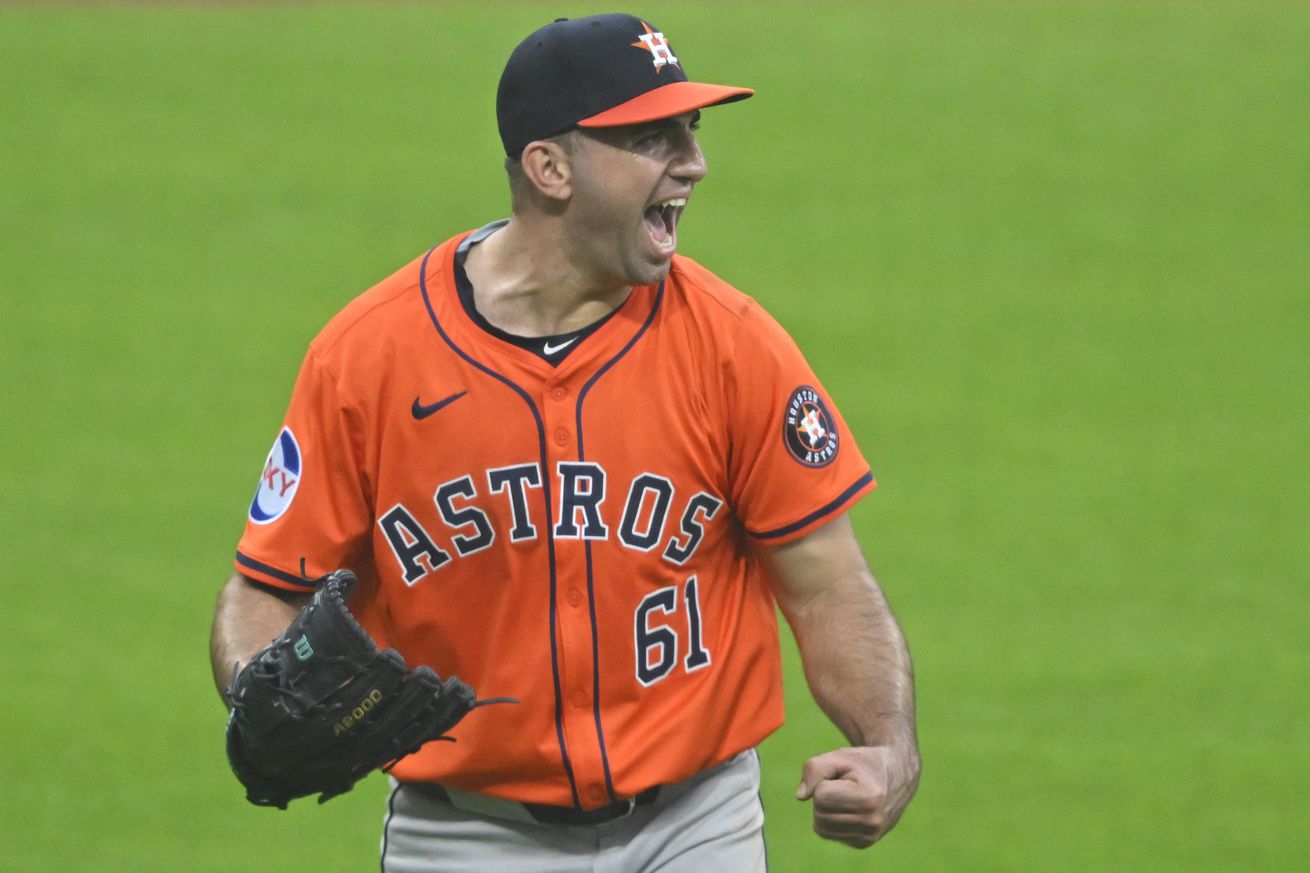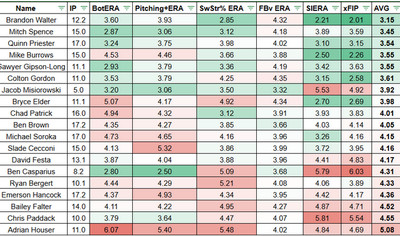
The four pitchers in the 6 man rotation who have replaced injured pitchers
The Astros’ rotation has been ravaged by injuries: Arrighetti, Wesneski, and Blanco all unavailable. And this is on top of uncertainty surrounding Garcia, Javier, McCullers, and France, the former starting pitchers who are trying to come back from surgery.
The Astros have reached far down into their pitching depth to throw these starting pitchers into the breach: Colton Gordon, Brandon Walter, Ryan Gusto, and Jason Alexander. So far these guys have held up about as well as could be expected. Let’s be clear. These guys are pitching above their “reputation.” Two are prospects that aren’t highly ranked. Two are essentially older minor league free agents who have sketchy major league experience and bounced around several ML teams in the past. One of the latter two (Alexander) was DFA’d this year by the Oakland A’s which has one of the weaker pitching staffs in baseball.
They all have answered the call and pitched better than many expected. But there are still questions we can’t answer. Will they come back to earth? Were they pitching with smoke and mirrors? As Cody suggested in an article yesterday, the next couple of weeks, with the Astros’ facing tougher opponents, could suggest some answers.
So far we are dealing with very small samples, which hinders our evaluation. But we can examine some underlying metrics which might shed some light on the immediate future for the four replacement starters.
Since we are reviewing small sample sizes, I will give credit to Fangraphs’ fantasy section (Rotographs) for some excellent work in this area. Jeff Zimmerman’s recent article “Ranking Small Sample Pitchers” provides an intriguing examination of starting pitchers with a 10 – 12 IP sample over the last two weeks. Fantasy teams have to make some decisions on pitchers with small sample size backgrounds, which is why Rotographs does so much work on this issue.
Zimmerman first evaluates the correlation coefficients for a wide variety of metrics to determine which are the best at predicting future performance based on a small sample. He then selects the best six small sample metrics, converts them to ERA equivalents, and then averages the metrics for each small sample pitcher available on fantasy “waivers.” He uses the average of six metrics to rank the pitchers.

Rotographs (Zimmerman)
As you will notice, Brandon Walter ranks No 1 among the small sample pitchers with an ERA equivalent of 3.15. His numbers are very good across the board with only velocity as the sub-par metric.
Zimmerman writes; “In this instance, Brandon Walter stands out with everything looking great, except his 92 mph (4.32 ERA) fastball. He could bomb, but the goal is to make the best decision with little information.” One of the comments on the article is also insightful: The Statcast numbers on the break of his (Walter’s) sweeper, sinker, and changeup are eye-popping. He’s got a healthy chase rate and that kind of movement might explain why.
Colton Gordon also ranks fairly high in this analysis with an ERA equivalent of 3.61. Gordon and Walter are the only two Astros’ pitchers included on Zimmerman’s list.
Stuff+ and Pitching Bot
Fangraphs provides two pitching models, which are based on the physical characteristics of pitches: Pitching Bot and Stuff+. Pitching Bot is expressed as a projected ERA and Stuff+ is composed of Stuff+, Location+, and the composite Pitching+; these metrics are expressed on a scale of 100= average.
My theory is that the pitching models may provide the best predictor for immediate future pitching performance because they are based on the underlying pitching skills rather than BABIP or random HRs. This seems to be confirmed by Zimmer’s analysis of the correlation between one month samples and rest of season performance. In small samples, Pitching Bot, Stuff+, Pitching+, and Location+ tend to provide better correlations with the future performance of several metrics like ERA, BB%, K%, HR/9 and WHIP. More intriguing, in small samples the pitching models may be more predictive than traditional predictors like x-FIP or SIERA.
Based on BotERA, Gordon, Walter, Gusto, and Alexander produce equivalent ERAs of 3.02, 3.61, 3.71, and 5.11, respecitvely. All of the BotERA measures are good except for Alexander’s 5.11. Since Alexander’s results include his term pitching for Oakland, it would be interesting to know if the Astros’ minor league pitching coaches changed his pitching mechanics or arsenal, which could have led to improvement in his single Astros’ start.
What about the Stuff+ model?
All four pitchers hold up pretty well on the Stuff+ scales. The best Stuff belongs to Alexander at 103, followed by Walter at 102. Gusto has average Stuff (100) and Gordon has slightly below average Stuff (98). (If you thought Alexander appears to have a lot of movement on his pitches—that is probably correct.)
But Stuff isn’t everything, since Location+ will tell us how well the pitcher commands pitches. Gordon’s Stuff may not be eye-popping, but his Location+ is very good, which is consistent with his reputation as a control-first pitcher. The Location+ is: Gordon 110, Walter 108, Gusto 100, and Alexander 98.
The Pitching+ metric combines Stuff and Location. The Pitching+ results: Alexander (105), Walter (103), Gordon (102), and Gusto (100). All in all, the rankings are pretty decent.
At this early stage, all four replacement pitchers show reasonable underlying pitching skills which hopefully are sustainable.